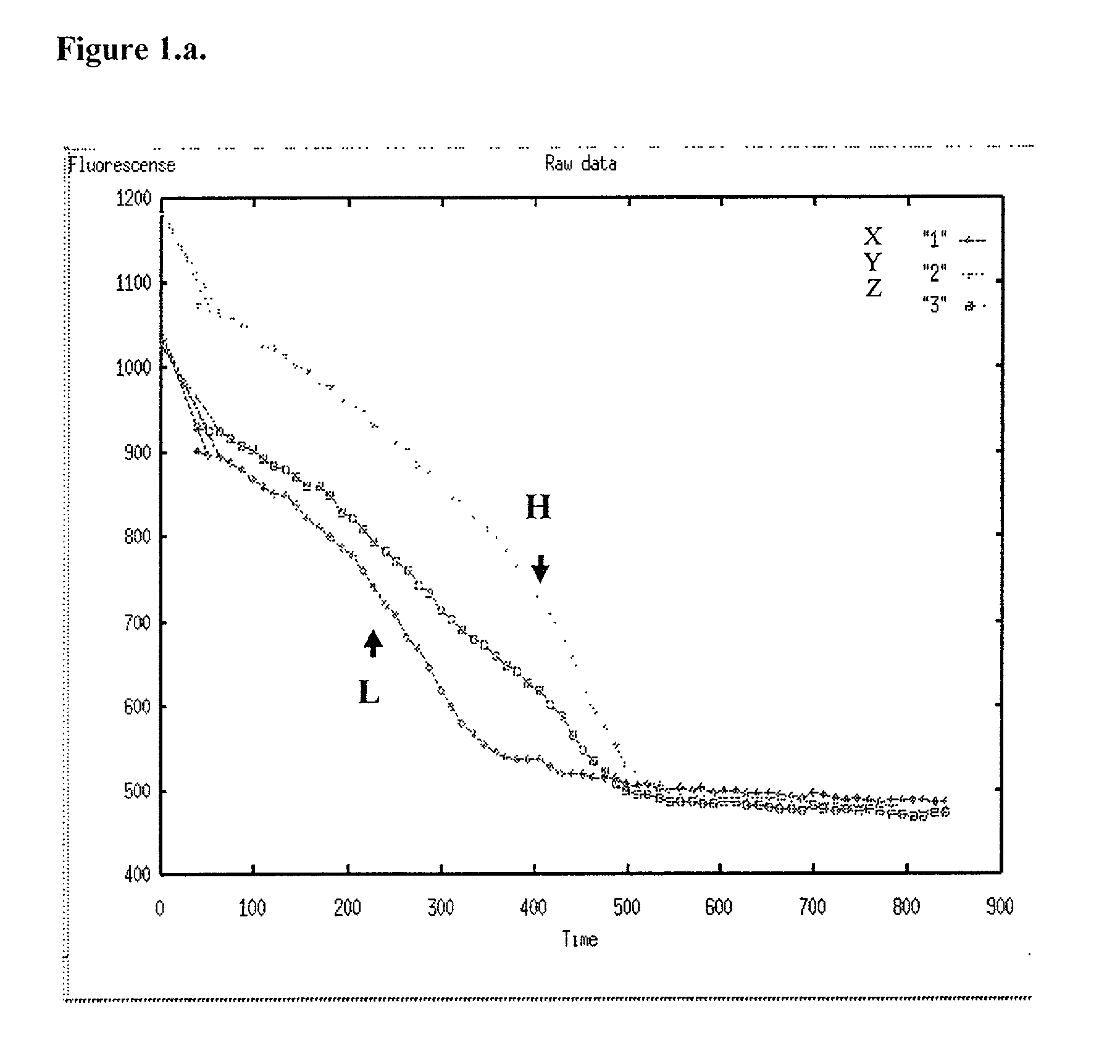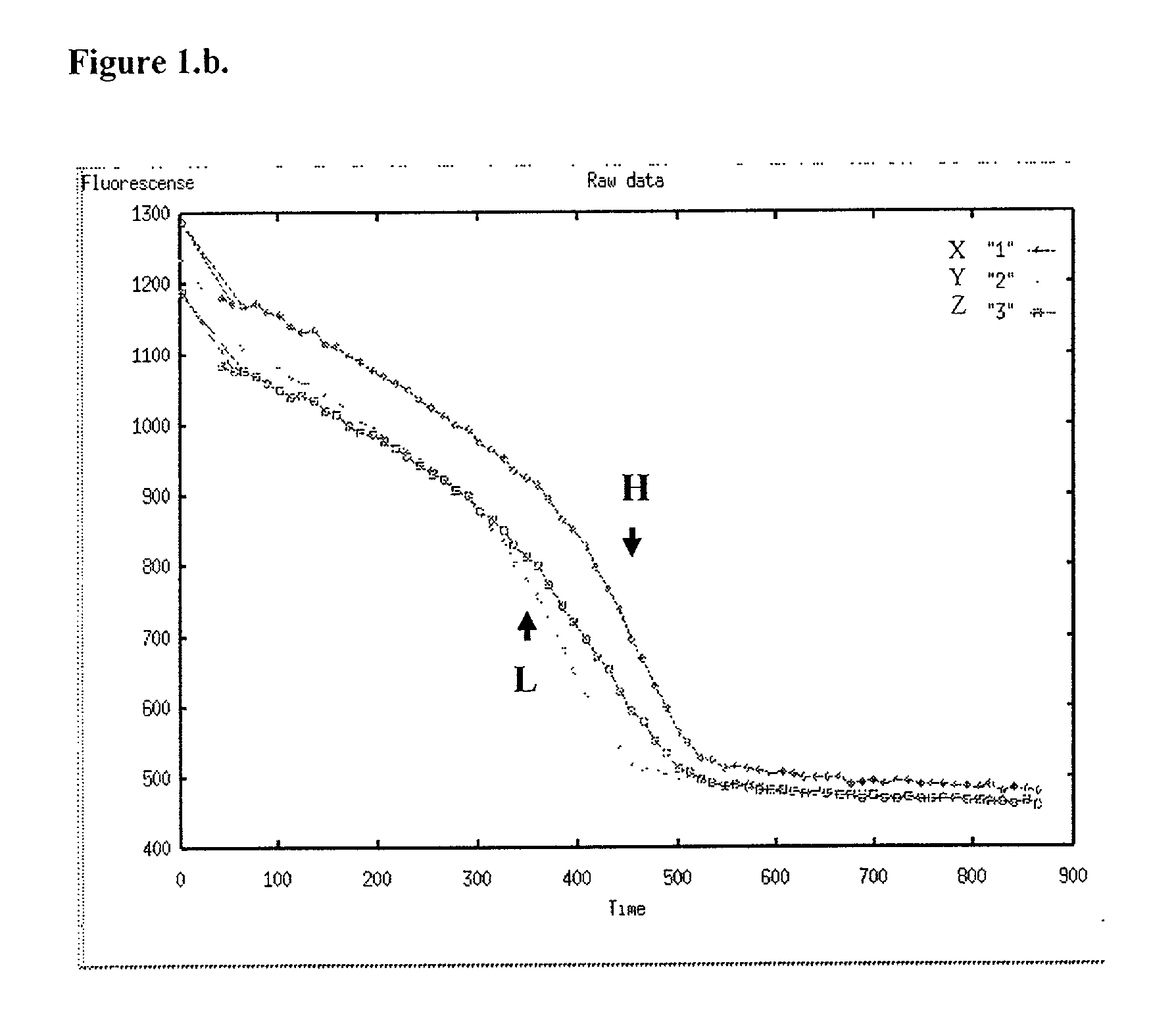Detection of nucleic acid polymorphism
a nucleic acid polymorphism and detection method technology, applied in the field of detecting dna variation, can solve the problem of difficulty in determining an adequate discriminatory hybridization stringency, and achieve the effect of reducing the tm of the oligonucleotide probe/target dna complex, maximizing the potential for allele discrimination, and increasing the distinction
- Summary
- Abstract
- Description
- Claims
- Application Information
AI Technical Summary
Benefits of technology
Problems solved by technology
Method used
Image
Examples
Embodiment Construction
[0048] In carrying out methods in accordance with the type previously described, it will be usual to form a series of two or more complexes of the kind defined, each with a probe specific for a different allele of the variation, and observing their respective transition points so as to distinguish alleles of the variation plus the homozygous or heterozygous state if appropriate. Using fluorescence, the melting temperature is conveniently determined by reference to the negative or positive first or second derivative (differential) of the output signal (fluorescence measurement) curve.
[0049] The method of this invention is advantageously carried out with the single strand DNA attached to a support material, most conveniently by a biotin / streptavidin type interaction. The single strand is derived from a double stranded DNA product of PCR amplification of a target sequence. Low complexity sequences, such as cultured viral genomes, purified cloned DNAs etc., can be end-labelled with stre...
PUM
| Property | Measurement | Unit |
|---|---|---|
| Temperature | aaaaa | aaaaa |
| Length | aaaaa | aaaaa |
| Annealing point | aaaaa | aaaaa |
Abstract
Description
Claims
Application Information
 Login to View More
Login to View More - R&D
- Intellectual Property
- Life Sciences
- Materials
- Tech Scout
- Unparalleled Data Quality
- Higher Quality Content
- 60% Fewer Hallucinations
Browse by: Latest US Patents, China's latest patents, Technical Efficacy Thesaurus, Application Domain, Technology Topic, Popular Technical Reports.
© 2025 PatSnap. All rights reserved.Legal|Privacy policy|Modern Slavery Act Transparency Statement|Sitemap|About US| Contact US: help@patsnap.com



